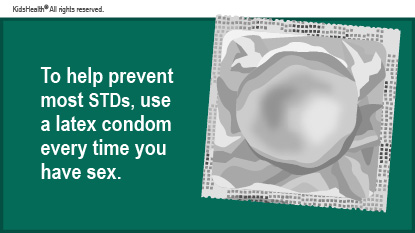Sexually transmitted diseases (STDs) spread from person to person during sex (vaginal, oral, or anal). Some STDs (also called sexually transmitted infections, or STIs) are caused by bacteria (a type of germ). It's important to start treating those with antibiotics right away. This helps prevent long-lasting problems and stops STDs from spreading to other people. If you are waiting for test results, they should be back in a few days.


Treatment:
Follow-up:



What are the signs of an STD? Signs of an STD can include discharge from the vagina or penis, genital sores, pain in the lower belly, pain with sex, or burning or pain when peeing. But someone can have an STD without any signs.
How are STDs diagnosed? To find out if someone has an STD, and which germ is causing it, health care providers might do tests on:
How are STDs treated? It depends on which germ caused the infection. Antibiotics can treat STDs caused by bacteria (such as gonorrhea, chlamydia, or syphilis). But antibiotics won't work for STDs caused by a virus.
What happens if an STD is not treated? An STD that's not treated can:
Even if people with STDs have no signs, they still need treatment to avoid these problems.
How can I avoid getting another STD? The best way to avoid an STD is not to have sex (vaginal, oral, or anal). If you do have sex, you should: